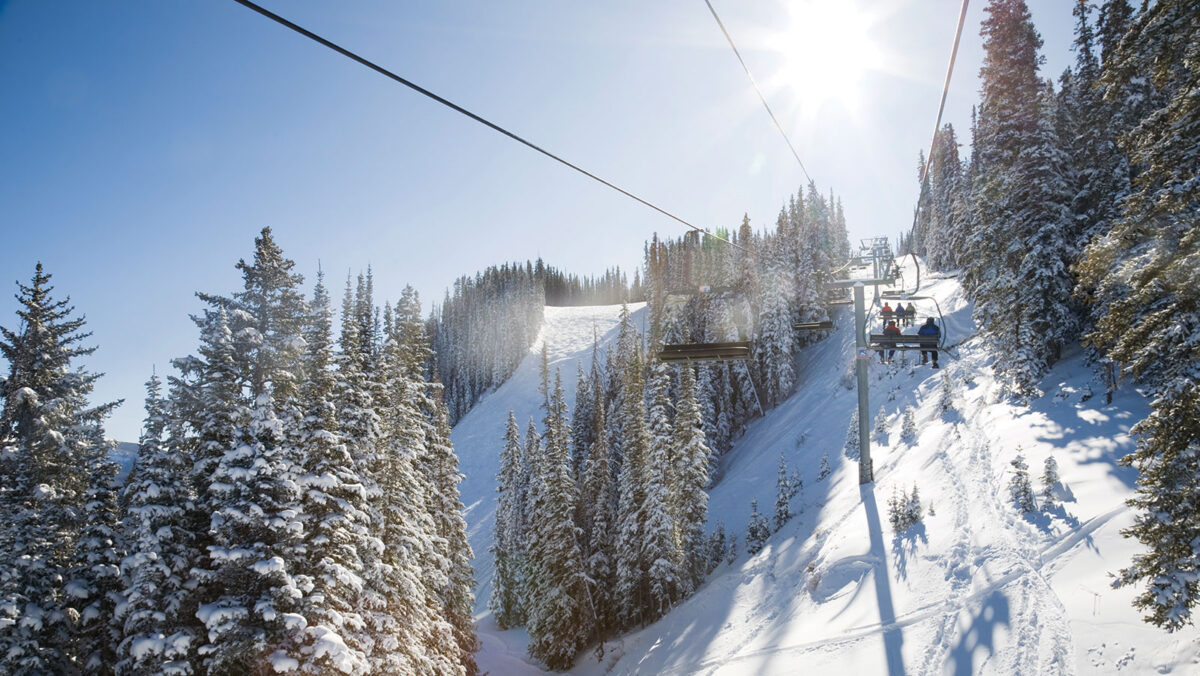
Finding Your Nurture in Nature
April 2023
Download This Article (.pdf)
When I tell people that I moved back to Colorado so that I could enjoy nature in its fullest glory, the first response I usually receive is, “Do you ski?” Indeed, the state is renowned for its epic outdoor adventures. However, beyond these adventures, there lies a gentle invitation from nature; it beckons us to reconsider its many nurturing threads. Thus, rather than simply focusing on what we do out in nature, perhaps we can also consider how we experience nature and why it might be worth it to incorporate a different kind of nature-based practice into our weekly routines. This article introduces some novel and accessible ways to explore the wonders of nature as well as the free benefits of spending time in relationship with nature.
When You Can’t Escape the Office
As the daughter of a retired attorney, I have vivid memories of my mother getting up before dawn to head to the General Assembly so she could advocate for various bills. The rhythm was to work until it’s done. Decades later I have continued this pattern in my own career as an Air Force officer engaging in overseas deployments, serving as a 24/7 first responder for sexual assaults, training as a clinician in a demanding fellowship, and being a solopreneur launching a nature-based psychotherapy practice during a pandemic. We stay and work because we care about our clients and our causes, and we don’t have the luxury of adding something else to our packed schedules. With this in mind, I ask you to observe nature for just 60 seconds during the coffee or restroom break you’re already taking. This simple act will allow you to experience the research-based physical, cognitive, and stress-relieving mental health benefits of a nature-based practice.
Your 60-Second Indoor Nature Break
If you’re inside and in between meetings and appointments, take a deep breath and exhale. Then allow yourself 60 seconds to explore. Here are some ideas of what might be available to you:
- If you have access to a window, move to the window. What do you see outdoors?
- Perhaps your surroundings are buildings and pavement. If so, can you notice a leaf drifting across the sidewalk, being gently rolled and turned by the wind? Or perhaps there’s a tree or two lining the street. Can you stop and notice how its limbs gently sway? Is there a bird or another creature resting in its arms? Take 60 seconds to look through a window or open door and notice what you see.
- If your sight isn’t accessible, can you open the window and take a listen? Do you hear any creatures playing or singing? Can you hear the crunching of leaves or the rustling of the wind?
- If you’re lucky enough to have a nature oasis, such as a grass courtyard or a few trees bursting forth at a park, can you focus on just a small area? Perhaps you notice a squirrel jumping limb to limb as it triumphantly clutches lunch?
- If your setting allows, can you open the window and try smelling the signs of nature? Depending on the season, can you smell its varying aromas?
- If you’re in a setting where nothing outside an office window appeals to you, or you do not have windows in or near your workspace, can you take a break to look up a nature video on your phone? You could replay nature sounds you recorded on a recent outdoor walk or try YouTube for some amusing or relaxing depictions of nature. This might be a rainforest scene, a lake where a hippopotamus muses, or a close-up view of a bird nesting with its mate.
- If you have any office plants or houseplants, you can greet them and explore the textures of their leafy surfaces.
Establishing an Outdoor Practice
If you reside in Colorado, I imagine you may already have some kind of outdoor engagement in nature that may vary season to season. Or perhaps you’re not the “outdoorsy” person others expect Coloradans to be. Maybe you used to be active and now accessibility is more difficult due to chronic pain or other limitations. Taking into consideration our unique orientations and various seasons, here are some ideas of how to attune to nature in a more intimate way when spending time outdoors.
First, think about what you like to do. This might be reading or listening to a book, taking a walk, or engaging in a hobby like drawing or photography. Then consider, is there any way you can integrate this practice with time in nature? Some ideas include:
- If it’s late spring or early fall, take your book outdoors and lay on a blanket in the yard or park, or sit on a park bench while you read.
- If you enjoy movement, perhaps try a low-key hike. There are many open spaces that have flat trails with relatively little elevation gain; thus, the trails can support folks with a variety of abilities. Some open spaces also have paved paths with beautiful mountain or lakeside views that can accommodate wheelchairs or baby strollers.
- If you enjoy drawing or photography, perhaps you can find life in nature to capture through your colored pencils or camera lens.
- If it’s wintertime, try picking up a few plants to nurture indoors. These plants can connect to other activities, such as growing herbs to use in your cooking. In the summertime, some reservoirs and lakes rent watercraft that support a variety of abilities. Maybe you take out a kayak with your partner or grab some friends who are up for a paddleboarding lesson.
When you’re ready, invite yourself to try something new. For example:
- If you like to walk, perhaps you borrow a pair of snowshoes from a friend (or you can rent them for about $15) and try a low-key stroll through a local snowy park in the wintertime.
- Whether you live solo or have a house full of children, bird watching and “critter” watching can be a fun activity to get outdoors, even if just for a few minutes. Pick up a book from the local library that can orient you to different kinds of birds and animals that inhabit your local parks, whether urban or rural.
- If you’re not sure where to start, begin by gazing at a sunrise or sunset. Observe how the sky shifts colors as the day greets you or winds down into the evening.
- If you’re worked to the bone and you find it’s nighttime now, can you take a moment to step outside, inhale some crisp air, and gaze up at the stars?
Benefits of Nature Exposure
As we begin to incorporate indoor and outdoor ways of connecting to nature, we’re doing our minds and bodies a favor, too! A plethora of benefits can be gained from these practices. Here are some notable findings from research explored by Florence Williams in The Nature Fix:1
- Researcher Rachel Kaplan at the University of Michigan shared an antidote to mental fatigue called “soft fascination.”2 This nature-based activity allows the brain to rest and recover from stress. It involves focusing your attention solely on an outdoor scene or sounds. For example, you might open your window to listen to the wind or look outside at a peaceful landscape.
- A study by Yoshifumi Miyazaki and Juyoung Lee of Chiba University demonstrated the physiological and psychological benefits of shinrin-yoku, which is the Japanese term for “forest bathing” or “taking in the forest atmosphere.” The study compared subjects’ stress response when walking in forest versus urban environments. The study found that cortisol levels dropped by 12%, heart rates dropped by 6%, and blood pressure dropped by 1.4% when walks were taken in the forest versus the urban settings. Participants also reported experiencing lower anxiety and more positive moods following the forest walks.3
- British psychologist Eleanor Ratcliffe studied the effects of birdsong in indoor urban locations. She discovered that many people experience various sound pitches from birds as quite restorative.4
Making the Shift
It can take time to reconsider and renegotiate our relationship with nature. Given the mental health benefits, I think it’s worth it for us to try. The next time you’ve had a really long day at work and you’re about to engage in your typical de-stressing activity (e.g., mindlessly scrolling through your phone or watching a show), take a pause. Is there any way you can incorporate nature into a relief activity instead? Is there anyone you can invite to join you?
I wish you curiosity, awe, joy, and relief as you explore new ways of experiencing the true nurture of nature.
Notes
1. Williams, The Nature Fix: Why Nature Makes Us Happier, Healthier, and More Creative (W.W. Norton & Co. 2017).
2. Id. at 23.
3. Id. 48–49.
4. Id. at 100–101.


